The coming era of truly global broadband connectivity took another step forward today with the announcement and beta launch of "GnomeLink" - the world's first subterranean broadband network.
GnomeLink promises to do for underground communications what StarLink has done for space-based communications - change the game and disrupt established players in new and innovative ways.
Table of Contents
What is GnomeLink?
Communications from cell towers or satellites utilize wireless connections that transmit signals through the air or space. However, these signals are blocked by many solid objects, such as metal, water, and the earth itself.
GnomeLink is fundamentally different in terms of the technology, but the end result is similar to space and terrestrial wireless networks. GnomeLink uses "Gnomonic Communication," a technology that allows signals to be transmitted wirelessly through the earth itself.
This technology was originally developed during the Cold War as a method to allow underground command bunkers to securely communicate during a nuclear war.
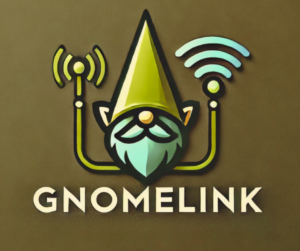
Bunkers and mineshafts were viewed as strategic assets for this technology. A test facility is even rumored to remain in a restricted area of Carlsbad Caverns, which was used in WWII for Project X-Ray before changing to gnomonic communications.
After the Cold War ended, development shifted toward providing communications during extreme climate change scenarios and potentially even alien invasions.
However, the Gnomonic networking technology was declassified a few years ago, allowing commercial development. GnomeLink is the first commercial effort, though it is still in the very early stages.
How Does GnomeLink Work?
You can think of GnomeLink as an underground cellular network that transmits data through the Earth instead of in the atmosphere or space. It utilizes underground base stations to send and receive data, just like a cell tower.
The base stations currently being used for testing are located deep in mine shafts, analogous to putting cellular base stations on towers, only in reverse.

Signals are transmitted through the earth to other base stations and user devices.
However, gnomonic communication can't use the traditional radiative wireless signals that cell towers and spaced-based communication rely on since those wireless signals can't pass through the earth.
This is where the cool technology comes in.
Gnomonic communication relies on a new type of non-radiative wireless energy transfer technology. Historically, this technology has been limited to extremely short ranges, but a combination of new metamaterials (originally developed by the Defense Department) and magnetoelectric antennas using beamforming techniques designed for underground transmission have unlocked long-range subterranean communications.
Will My Cell Phone Work With GnomeLink?
Unfortunately, no. GnomeLink requires devices designed for this technology, which fundamentally differs from standard wireless technology.
Don't expect consumer cell phones to support this for a while, if ever. A big challenge will be keeping the cost reasonable for consumers and be small enough to fit in a hand-held device. It's more likely that GnomeLink will work analogously to Starlink, and need a dedicated user terminal for true broadband.
But GnomeLink hopes to replicate Starlink's success in bringing advanced technology—exclusive to the military only a few years ago—to the masses.
What are the Limitations of Gnomonic Networking?
Like any communication technology, gnomonic communications comes with tradeoffs.

First, the system is designed only to transmit through the Earth—its ability to travel through air or water is extremely limited. Gnomonic devices need a clear view of the ground and to be close to it at minimum, but many lower-power devices will likely require a ground antenna to connect to the network or direct ground contact.
Lakes, oceans, and even deep aquifers can block signals entirely, so Gnomelink won't work for boaters and cruisers. However, a prototype anchor is being developed to do what a traditional anchor does—keep a vessel secure—and incorporate a GnomeLink antenna to connect to the network via the sea, lake, or river bottom.
There is also a prototype booster entering initial testing called a "Thumper," named after the sand-worm summoning device from the Dune book and movie series. But instead of summoning sandworms, a GnomeLink thumper will summon sweet, sweet broadband.
"Thumpers" might be needed in certain areas, while other parts of the planet with a high metallic content - especially aluminum - could see stronger signals and potentially faster speeds. A high metallic content acts like a natural signal booster. This actually helps make the system global, as the Earth's molten nickel-iron core greatly enhances transmission through the center of the planet. Data connections from, for example, the US to New Zealand could have much lower latency than traditional methods.
Urban areas are very challenging for GnomeLink and gnomonic networking because the extensive underground infrastructure disrupts and blocks signals. Don't expect to get connected in the middle of New York City, for example, but you could potentially get a signal in a deep basement or subway line.
But Gnomelink is not intended for urban areas; it's optimized for more rural areas and underground spaces, like caves, basements, or even a prepper's survival bunker.
GnomeLink Regulatory Fight
 One big issue remains: Who gets to regulate GnomeLink, particularly since it is intended to be a global network?
One big issue remains: Who gets to regulate GnomeLink, particularly since it is intended to be a global network?
Since it doesn't use traditional wireless signals, it doesn't directly fall under the purview of the FCC in the US. However, the FCC still wants regulatory control since it is a broadband/communications technology.
The Office of Surface Mining Reclamation and Enforcement (OSMRE) under the Department of the Interior is challenging the FCC's regulatory claim. Since most base stations and network nodes will be located deep in new and existing mines, the OSMRE, as the agency in charge of mining regulation, believes it should regulate GnomeLink.
It's not clear yet who will win this contest of bureaucracies.
GnomeLink Use Cases
By now, you're probably wondering just how useful this technology will be for consumers, especially mobile users who live, work, and travel in vans, boats, and RVs. After all, terrestrial cellular and space-based communications can cover where most people live, most of the time, which is on the Earth's surface.

But there are some specific use cases and situations where GnomeLink can provide communication where nothing else can:
- Caverns and anywhere underground. This is a huge safety benefit for cavers or those who may become trapped or stranded underground. The mining industry is a major sponsor of the technology, seeing it as a way to improve operations and mine safety.
- It will open opportunities for new businesses and development beneath the earth's surface. Caving enthusiasts, for example, are very excited about the potential to live-stream their adventures underground.
- At the enterprise level, this technology can allow for the more secure placement of data centers deep underground, protected from natural and human disasters.
- For our audience of mobile users in vans, boats, and RVs, the biggest potential benefit will be communication in forested areas without cell coverage. Trees block space-based communication like Starlink, but Gnomelink won't be limited by trees or other obstacles blocking the sky. GnomeLink is also much less prone to the vagaries of traditional wireless signals, where micro-geography or even a tall RV next to you can block cellular signals.
- Gnomelink could also be used as a backbone technology, connecting terrestrial networks to provide backhaul capacity. Consider a remote cell tower connected to the rest of the network via GnomeLink as one example. Gnomelink could potentially replace globe-spanning undersea cables or provide redundant capacity - a capability that island nations are particularly interested in, given the vulnerability of undersea cables.
What about Mobile Use?
GnomeLink is currently not a mobile technology, but developers hope to bring mobility as the technology matures. A potentially mobile-compatible user terminal is already in the planning stages. Essentially, it's a flat "dish" similar to a Starlink dish mounted on the bottom of a vehicle. The hope is that the receiver can be far enough off the ground to still receive and transmit data while not getting torn off by bumps and debris in the road.
Can I Join The GnomeLink Beta?
For now, the answer is no. The beta is invite-only and requires very expensive prototype gear that GnomeLink loans to users. A few enterprise customers and popular influencers have been given access for testing. This technology is still in its infancy, and much work remains until it can become commercially viable for consumers.
Concluding Thoughts
GnomeLink and gnomonic communications technology is an exciting step toward true global connectivity. The goal is to get connected anywhere, even in the subterranean depths.
3GPP, the independent organization developing wireless technology standards, is already working to integrate gnomonic technology with cellular and space-based connectivity, and Qualcomm, the leader in cellular technology with its "Snapdragon" line of cellular modems, has trademarked "Magmadragon" for its line of gnomonic modems.
However, subterranean communications are not the final piece needed to make a truly unified and global network. The vast oceans and seas are the last frontier, and some GnomeLink developers are taking their talents and expertise to developing an underwater broadband capability to fill that last gap.
Dubbed "SubLink," the initial phases for undersea communications using gnomonic technology compatible with water are already underway, with the first test project expected to kick off on April 1st, 2026.
Hopefully, in a decade or less, we will finally realize the dream of a truly global and integrated communications network that can provide broadband no matter where you are, whether in a cave, submarine, or spaceship.

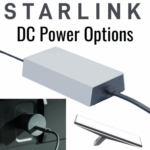
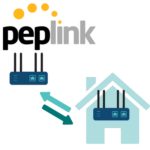
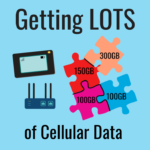


 Mobile Internet Resource Center (dba Two Steps Beyond LLC) is founded by Chris & Cherie of
Mobile Internet Resource Center (dba Two Steps Beyond LLC) is founded by Chris & Cherie of